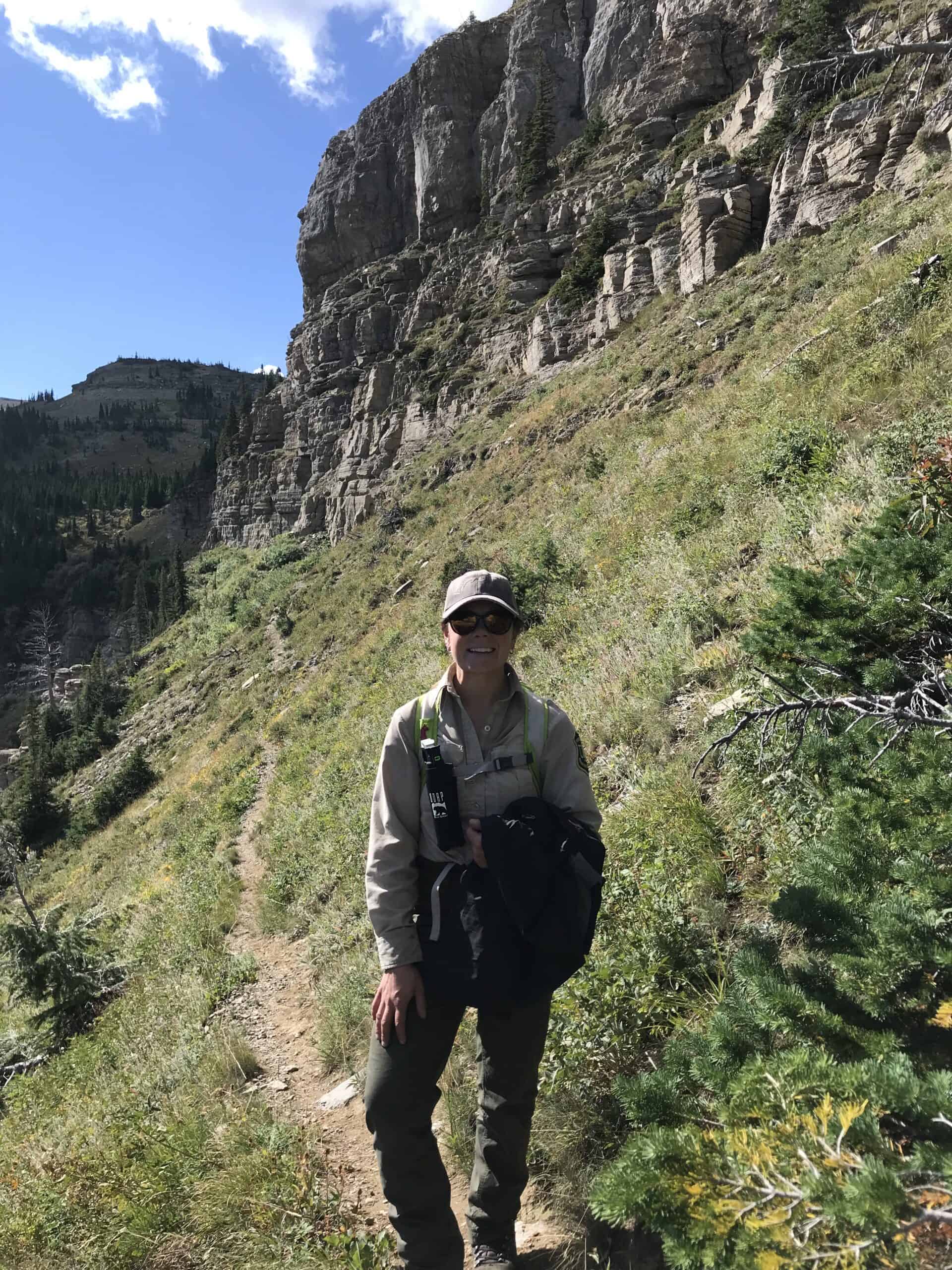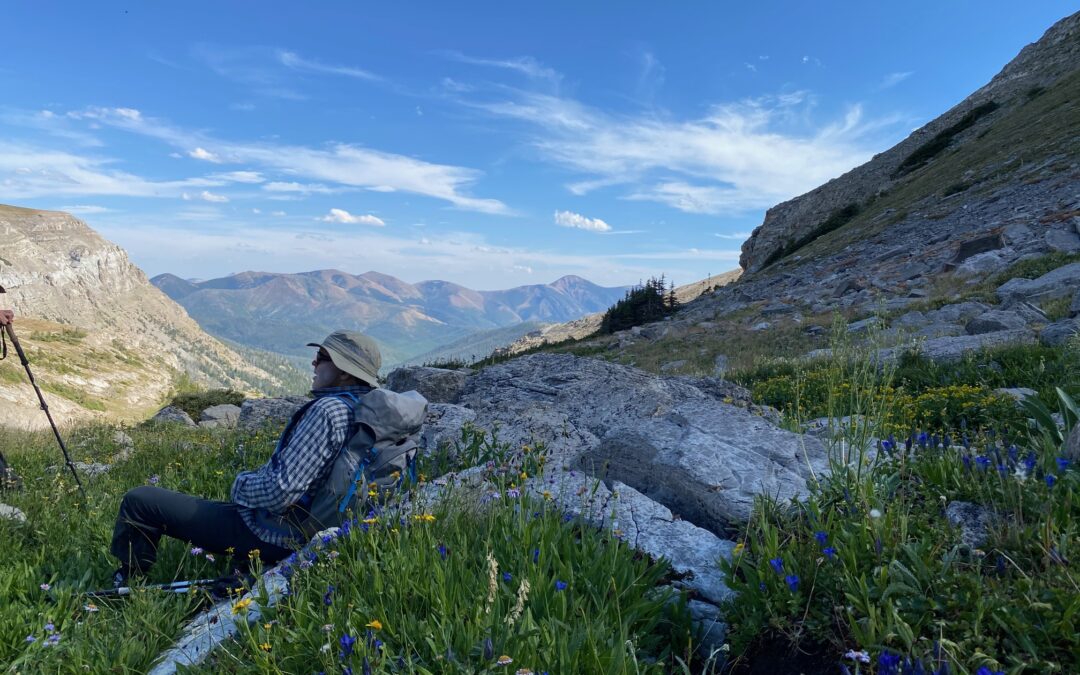Guest Blog By Ellie Fitzpatrick

Chances are if you find yourself reading this article, you’re an avid proponent of “the Bob”, [the Bob Marshall Wilderness Complex]. But maybe not; maybe your curiosity has simply been sparked by an internet search that led you to YouTube videos of stunning scenery while you were planning a summer backcountry trip. It’s possible you’ve only heard tales of adventures in the Bob from friends but have yet to experience its wildness for yourself. Whatever your current involvement with or knowledge of this area, consider this a call to action; a culmination of data collection and reporting has taken place within the Complex, and managers need your input.
The folks involved in managing this expansive, diverse area are tasked with disseminating information to the public every five years in a meeting that takes place in one of the communities bordering the Complex. 2024 happens to be a year in which a public meeting will occur, so please mark Saturday, April 6th in Hungry Horse, MT on your calendars. Disseminating information is a vague description, so you’re probably wondering what facts and figures will be discussed at the meeting, and why it involves you. This warrants a bit of background and history of wilderness management within the Bob, as well as an explanation of the Limits of Acceptable Change (LAC).
In response to increasing recreational demands on the Complex and changing legislative guidelines on land management practices in the early-to-mid 1980s, wilderness managers, scientists, representatives of different user groups, and citizens came together to review the effectiveness of management practices in the Bob. At the time, a ‘carrying capacity’ approach to managing wilderness areas, likened to range and wildlife management protocols, had been the standard. A wilderness area was deemed at capacity when use levels resulted in a specific amount of environmental deterioration and unsatisfactory recreational experiences per this method.
This was an effective management strategy in theory, but for those of us who spend time in the Bob recreating, working, volunteering, or all the above, we know the relationship between impacts and use isn’t that black and white. For instance, grazing stock in a subalpine meadow will have drastically different implications than grazing stock in an area dominated by heartier vegetation and a longer growing season. The people you see while traveling through the Bob could affect your wilderness experience depending on where the encounters take place, and the way folks act when you see them. With this variability in the use-impact relationship, managers shifted from trying to quantify how much is too much use and instead started to focus on what conditions were desirable within the BMWC. That shift in wilderness management practice is the core of the LAC protocol we use in the Complex today.
LAC recognizes that environmental and social changes are inevitable with the recreational use of Wilderness Areas and sets the standards for change that is acceptable. In the BMWC, managers strive to provide diverse wilderness experiences for all user groups, while still maintaining acceptable environmental conditions, as directed by the process. An advisory council tasked with quantifying the parameters of these goals agreed upon and published the 1987 BMWC Management Directive, which identified different ‘Opportunity Classes’ (OC) that dictate where, and to what extent, change will be allowed to happen. Each of the four Opportunity Classes in the BMWC have standards that address both the environmental and social aspects of wilderness and their respective levels of acceptability. For instance, in OC I, you can expect outstanding opportunities for solitude, unconfined recreation and pristine environmental conditions, and in OC IV, you are more likely to see multiple parties per day on well-traveled mainline trail corridors and at established backcountry campsites.
For the last five field seasons, backcountry crew members and wilderness rangers have been busy collecting data in each of the four Opportunity Classes within the BMWC. They inventoried campsites, looking at environmental conditions and determining if the conditions on the ground fit within LAC. They recorded the number of people and packstock they meet when traveling trail corridors and the number of floaters on rivers. They hunkered down in the fall and winter to enter data and produce reports that summarize the changes they see on the ground. These reports, along with their time spent interacting with the recreating public and witnessing use patterns in the field, are used to advise wilderness managers on current conditions and any actions necessary to maintain acceptable change. They are also used to inform scientists, outfitters, and guide groups, and citizens on the nitty gritty of the use-impact relationships in the Bob.
Now, this is where you come in. All the data, observations, reports, and decisions will be highlighted at the meeting in Hungry Horse on April 6th. This is a great opportunity to get involved with your local Bob Wilderness staff and to share your own observations from the field. Judgments of acceptable conditions require the input of everyone, and your engagement on behalf of this special place is integral in management decisions moving forward.
About the author:
Ellie Fitzpatrick worked in the Scapegoat Wilderness out of Lincoln as a backcountry ranger with the Forest Service for three years. She moved up to Choteau and worked in the Bob and Scapegoat Wildernesses in the same capacity for another four years. Ellie also spent a year in the Salmon-Challis National Forest working out of the Middle Fork Ranger District as a backcountry ranger.
Wilderness management and the preservation of places such as the Bob is important for recreational purposes, habitat connectivity, and so many other reasons. Get involved with your local ranger district or within your local communities to learn more about wilderness management in the Bob and across Montana.
Literature Cited
Stankey, George H., McCool, Stephen F. and Stokes, Gerald L. Limits of Acceptable Change: A New Framework for Managing the Bob Marshall Wilderness Complex. 1984. Western Wildlands. 10(3): 33-37.

